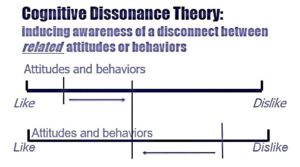Our official origin story of a national melting pot is what many still express, but millions of citizens carry the scars of bigotry, racism, sexism and homophobia. It is an old story that still puts many Americans out of the picture.
Live long enough on the unsteady terrain of American civil affairs and it seems like the seismic upheavals are frequent and endless. Patterns of breakdown bump into other existential threats that vie for attention. Natural disasters overlay human ones, as in the devastation in the Los Angeles area. Just now, the most recent fissures are evident in racial ghosting, anti-WOKE conspiracies, federal dismemberment, and the takeover of national electoral politics by the super-rich. All feed contorted mutations of language that almost make the absurd seem plausible.
The nation’s material wealth may soften the experience of moving too fast over unstable ground. But the ground will still win, with many retreating into origin stories that mostly skirt the white-man tribalism that has surfaced yet again. The American skill for euphemism has meant that patterns of dominance and control have mostly been renamed out of existence. But The remnants of past ruptures lie around us in a visible topology. It is hard not to be drawn to the edge, where dreams of national destiny keep us focused on the horizon rather than what is at our feet. Our official origin story of a national melting pot is what many still express, but millions of citizens carry the scars of bigotry, racism, sexism and homophobia.
Rumbles from the unstable ground come often enough to keep our politics in a state of a perpetual suspicion, a thread that extends far back to skirmishes with the French in the 1750s, and the British in the 1770s. In the modern era the nation faced real threats of Nazi domination, as well as exaggerated fears of victimage at the hands of Soviet or Chinese communists. Active thoughts of conspiracy blend with recurring instances of literal and rhetorical assassinations that have easily been top of mind in the eras of Kennedy, Nixon, King, Reagan, the second Bush, and now, Trump’s dangerous delusions of a hostility everywhere.
Trump has turned almost every relationship with other states into a test of wills, energized by a laundry list of imagined slights that require retribution. This is most obvious in the hostile turn on Canada, whose public discourse has mostly escaped the shadows and fog thrown off by American political rhetoric. As is often noted, maybe Canadians profited from missing a searing national birth in a true revolution. They and most of us can’t fathom the demons that currently drive the economic vengeance of their neighbor.
The “national story” is full of too many cracks to be covered over in the “preferred narratives” we tell ourselves.
We think the long reach of time is in our favor, ignoring the warning of Henry Adams, who wrote in 1879 that history “must submit to the final and fundamental necessity Degradation.”

This idea of decline is a continual theme in the work of one of the nation’s most important observers of our national life. In Slouching Toward Bethlehem (1968) Joan Didion, who passed away in 2021, refused to yield to the romance of 60s liberalism, with promises of a “counterculture” forging ahead in a new and less imperialistic nation. A writer of fiction and thoughtful books of observational reporting, the California native usually began with the trenchant principle that we tell each other stories “in order to live.” But her method always to included implicit caveat that narratives invite counternarratives. If most writers stayed in the center lanes of thought, Didion was the more dangerous observer willing to stay on the verges to get a better view of the abyss. Born in California and drawn to its fluid culture of Malibu as well as Goldwater libertarianism, Didion noticed the obvious decline of interpersonal connection that was beginning to favor atomized experience over collective action. Writing through the last quarter of the last century, she also saw a drift away from institutional and personal distrust that advanced democracies needs to flourish. As biographer Tracy Daugherty noted, “Didion felt this historical decline in her bones. The “national story” was full of too many cracks to be covered over in the “preferred narratives” we tell ourselves. Now, even the wealthy want to report ‘exact representations of their own victimization’ to whomever will listen. Such talk of the otherness of strangers results in the popular idea that even affluent cities have been “ruined” by the poor or homeless.
Roughly half in our polarized society thought their abuse was caused by large government, while others have recognized the value of a federal role in knitting the nation together. She tended to side with the skeptics, using her voice in the literate style of the “new journalism.” In one memorable account of hippie parents in San Francisco’s Haight-Ashbury the preferred narrative might often the sentimental romance with the Age of Aquarius. Didion offered another memorable view, including an account of a five-year-old in a squalid apartment hooked on LSD.
Reading Didion’s work in the 80s led many of us to conclude that her reporting about a fake national dream seemed too dark for the times. We wanted to see the pleasant glow, but we missed the fire. She was not distracted to and recorded the relentless and cyclical collapse of national intentions in Cuba, Vietnam, Laos, Panama and elsewhere. Halting steps toward the leveling of opportunity was always the best part of the American project. But gains were offset by the trauma and eventual numbness from the spate of assassinations, violent crime, school shootings, and racial tensions even in seemingly progressive cities. These fissures in American life seemed beyond what was possible with our incrementalist politics. With a few exceptions, like Lyndon’s Johnson’s Great Society programs in the early 1960s, it seems clear that otherwise limited horizons and an ossifying culture would make little headway in smoothing these kinds of fault lines. As Didion once noted, “The center will not hold.”
Our constitution blocks the timelier self-corrections that can happen in parliamentary systems. Squint a little and an independent executive and Congress in one month can easily look like a politburo and an oligarch in the next. Until the election of Trump, the nation had not faced so committed a chaos agent, and one from a blue state. The election caught us looking in the wrong direction, guessing that our largest existential rupture would come at the hands of a dominant southern Congress.
![]()

 At the Oval Office meeting the President took the opposite position of the one urged by Marco Rubio. Rubio suddenly fell silent. As the Guardian reported, “The image of a sullen Rubio quickly went viral online, with one social media user dubbing him ‘the corpse on the couch.’”
At the Oval Office meeting the President took the opposite position of the one urged by Marco Rubio. Rubio suddenly fell silent. As the Guardian reported, “The image of a sullen Rubio quickly went viral online, with one social media user dubbing him ‘the corpse on the couch.’” There are many possible refinements and variations on this model, but even in its simplest form it offers a theory of how our attitudes can change. Festinger was also wise enough to never underestimate our willingness to deny a contradiction.
There are many possible refinements and variations on this model, but even in its simplest form it offers a theory of how our attitudes can change. Festinger was also wise enough to never underestimate our willingness to deny a contradiction.